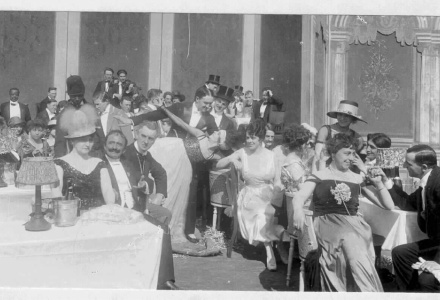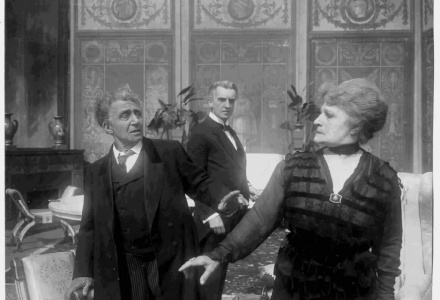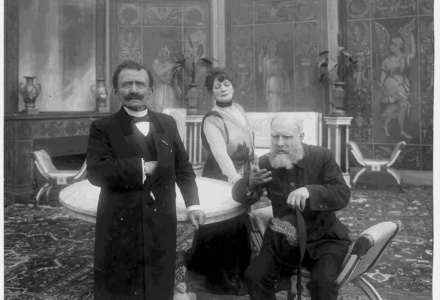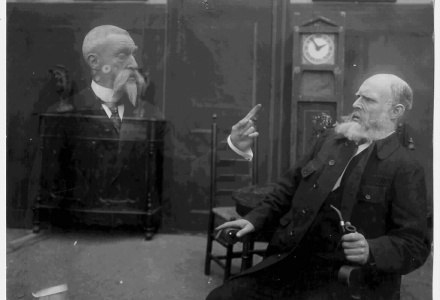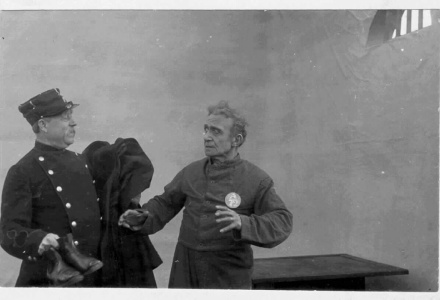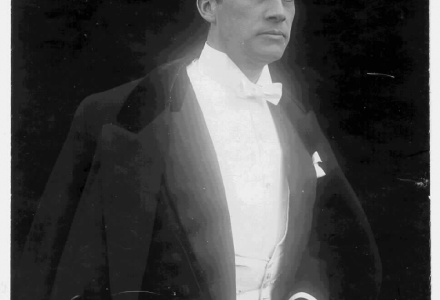Pro domo
Summary
Count De Grancé and his wife have two degenerate children. For their adolescent daughter there is still some hope, as her main vice appears to be that she devours the novels of Emile Zola. The son leads a dissolute life in gambling dens, where he cheats at cards, and in night-clubs where he associates with disreputable characters and is having an affaire with a dancer. One evening the Count sees his drunken son thrown out of one of his usual haunts. At home in the castle, the son gives his father a revolver and begs the Count to shoot him because he knows that he is a rotter and is unable and unwilling to change his way of life. It is only when the son blames his degeneracy on his lineage that the Count, deeply insulted, pulls the trigger and shoots his son dead. During the trial that follows, the Count delivers a passionate speech in which he recalls how happy he and his wife were with the birth of a son but how alarmed they became when they were confronted with evidence of the boy's cruelty - as a boy he enjoyed killing and mutilating birds - and increasingly degenerate behaviour. He has killed his son, he says, to save the honour of his family. Nevertheless, for this murder he is sentenced to imprisonment. Five years later he is pardoned by the Kaiser. However, when he goes back home, his wife will have nothing to do with the man who murdered their son, even though a nun, Sister Thérèse, does her utmost to bring about a reconciliation. A man who kills his own son in order to keep the family "pure" is, in the eyes of the Countess, either a villain or a madman. Shortly thereafter, the physically and mentally broken Count De Gracé dies.
Information
Images
Cast
Actor
-
Dancer in the "Alcazar" café
-
Henri de Beaucourt
-
Honourable Ms. De Grancé
-
Prince
-
Count Louis de Prébois de Grancé
-
Count's gardener
-
Tonia
-
Governess
-
Police officer
-
Police officer
-
the gamekeeper
-
Sister Thérèse, a nun
-
Countess De Grancé
-
Priest
-
Young Count De Grancé
Crew
-
Director
-
Producer
Technical notations
Resources
G. Donaldson, Of Joy and Sorrow. A Filmography of Dutch Silent Fiction, Amsterdam (1997), pp.169-170
De Bioscoop-Courant No. 30, 19 april 1918, p. 21
De Bioscoop-Courant No. 52, 20 september 1918; Bijlage van De Bioscoop-Courant
De Bioscoop-Courant No. 53, 27 september 1918, p. 51
De Bioscoop-Courant No. 1, 4 oktober 1918
De Kinematograaf, No. 304, 8 november 1918, p. 4112-13
De Film-Wereld, No. 19, 15 juni 1918, p. 6
De Film-Wereld, No. 31, 7 september 1918, pp. 4-5, p. 7
Tooneel en Bioscoop No. 30, 1917-1918, p. 112
Algemeen Handelsblad, 19 september 1918
Nieuw Weekblad voor de Cinematografie No. 31, 1925
more information
If you are looking for more material from our collection, please contact Film Sales:
sales@eyefilm.nl
phone +31 (0)20 5891 426

